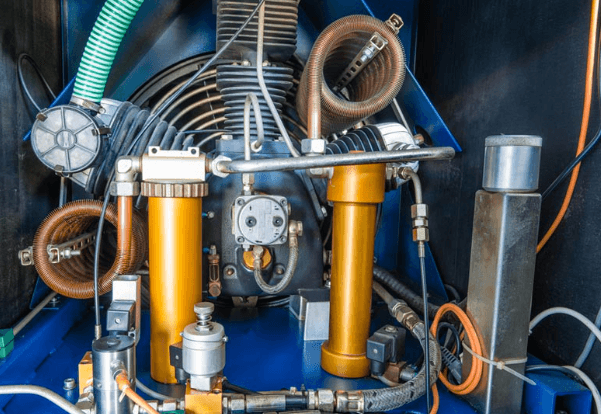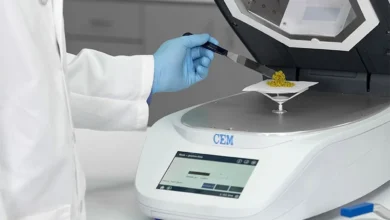What is a Scuba Tank Compressor?

Scuba diving relies on a steady supply of compressed air to allow divers to explore beneath the surface safely. Whether you’re a recreational diver, a dive shop owner, or part of a commercial diving operation, having access to a reliable air supply is crucial. This is where scuba tank compressors come into play. These specialised machines ensure that your tanks are filled with clean, high-pressure air that meets strict safety standards.
But what exactly is a scuba tank compressor, how does it work, and what should you look for when purchasing one? This guide will cover everything you need to know.
What is a Scuba Tank Compressor?
A scuba tank compressor is a high-pressure air compressor designed to fill scuba tanks with breathable air. Unlike standard air compressors used for tools or industrial applications, scuba compressors have specialised filtration systems that remove moisture, oil, and other contaminants to ensure the air is safe for breathing.
These compressors operate at significantly higher pressures, typically between 3,000 and 4,500 PSI, to meet the requirements of modern scuba tanks. Divers rely on these compressors to refill their tanks safely, whether at a dive shop, on a boat, or in remote locations.
See also: How Gamification is Revolutionizing User Engagement in Fintech
How Does a Scuba Tank Compressor Work?
A scuba compressor operates in several stages to compress and purify air for safe breathing. The process includes:
- Air Intake – The compressor draws in ambient air.
- Compression Stages – The air is progressively compressed in multiple stages, with cooling between each stage to prevent overheating.
- Filtration & Moisture Removal – Special filters remove moisture, oil, and contaminants to ensure high-quality breathing air.
- Final Stage Compression – The air reaches the required pressure (typically 3,000-4,500 PSI).
- Tank Filling – The purified, high-pressure air is transferred into the scuba tank.
For those looking for a scuba tank compressor Australia, there are various options available, including portable and stationary models suited for different diving needs.
Types of Scuba Tank Compressors
1. Portable vs. Stationary Compressors
- Portable Compressors – Compact and lightweight, ideal for personal or boat use.
- Stationary Compressors – Larger, high-capacity units typically used by dive shops and commercial operators.
2. Oil-Lubricated vs. Oil-Free Compressors
- Oil-Lubricated – Require oil for cooling and lubrication, offering durability and efficiency.
- Oil-Free – Lower maintenance but may have a shorter lifespan.
3. Electric vs. Petrol/Diesel Compressors
- Electric Compressors – Require a stable power supply and are ideal for indoor or dive shop use.
- Petrol/Diesel Compressors – More portable, making them perfect for remote locations where electricity isn’t available.
Key Features to Look for in a Scuba Compressor
When purchasing a scuba compressor, consider the following features:
- Air Output Capacity (CFM) – Determines how fast the compressor fills a tank.
- Pressure Rating – Should match the standard scuba tank pressure (typically 3,000-4,500 PSI).
- Filtration System – Ensures the air is free from contaminants.
- Portability – If you need a compressor for boat diving or remote areas, a compact model is best.
- Noise Level – Some compressors can be very loud, so check the decibel rating if noise is a concern.
Why Scuba Compressors Must Meet Safety Standards
Breathing air quality is critical for diver safety. In Australia, compressed air for diving must meet AS2299 standards, ensuring it is free from harmful contaminants like carbon monoxide, oil, and excess moisture.
Using a standard industrial compressor for scuba tanks is highly dangerous, as it does not have the necessary filtration to remove harmful substances from the air. Regular maintenance, including air quality testing and filter replacement, is essential to ensure compliance with safety regulations.
Cost & Buying Guide for Scuba Compressors in Australia
Scuba tank compressors vary in price depending on their size, capacity, and features. Here’s a general price range:
- Portable models: $3,000 – $10,000
- Stationary dive shop models: $10,000 – $50,000+
For divers in Australia, scuba compressors can be purchased from specialist dive gear retailers, marine equipment suppliers, and online stores. Before purchasing, consider:
- Your budget and long-term needs.
- How frequently you’ll use the compressor.
- Whether you need portability or a fixed installation.
Maintaining a Scuba Tank Compressor
Proper maintenance ensures the longevity of your compressor and the safety of the air it produces. Key maintenance tasks include:
- Regular oil changes (for oil-lubricated models).
- Filter replacements to maintain clean air quality.
- Checking for moisture buildup in the system.
- Inspecting hoses and fittings for leaks or damage.
- Performing routine air quality tests to ensure safe breathing air.
If the compressor is making unusual noises, struggling to reach full pressure, or producing air with an odd smell, it may need servicing.
Conclusion
A scuba tank compressor is an essential tool for divers who need a reliable air supply. Whether you’re a recreational diver, dive shop owner, or commercial operator, choosing the right compressor is key to ensuring safe, high-quality breathing air.
By understanding how compressors work, the different types available, and how to maintain them, you can make an informed decision when purchasing one. Always ensure your compressor meets Australian safety standards and invest in proper maintenance to keep your dives safe and enjoyable.




